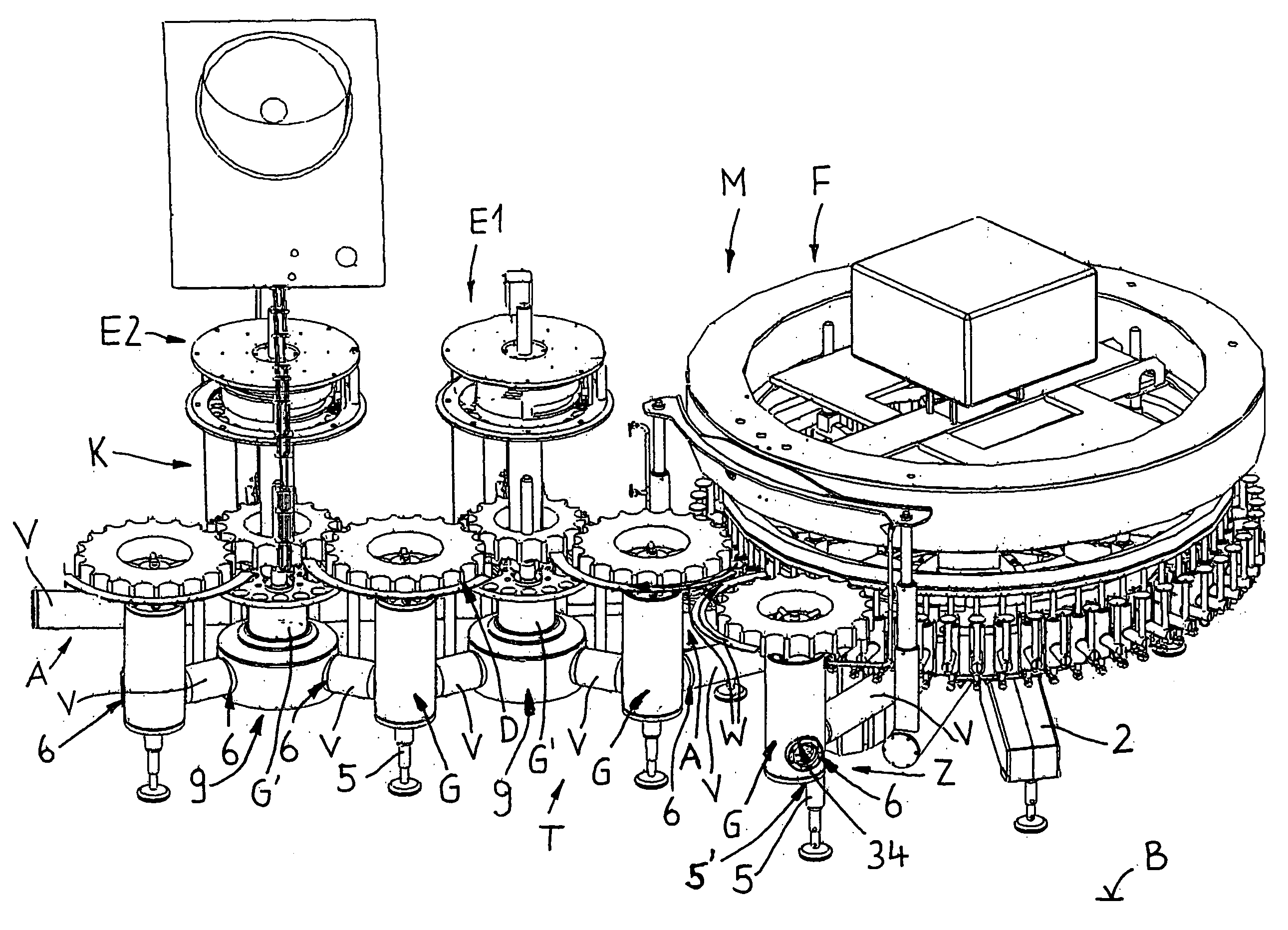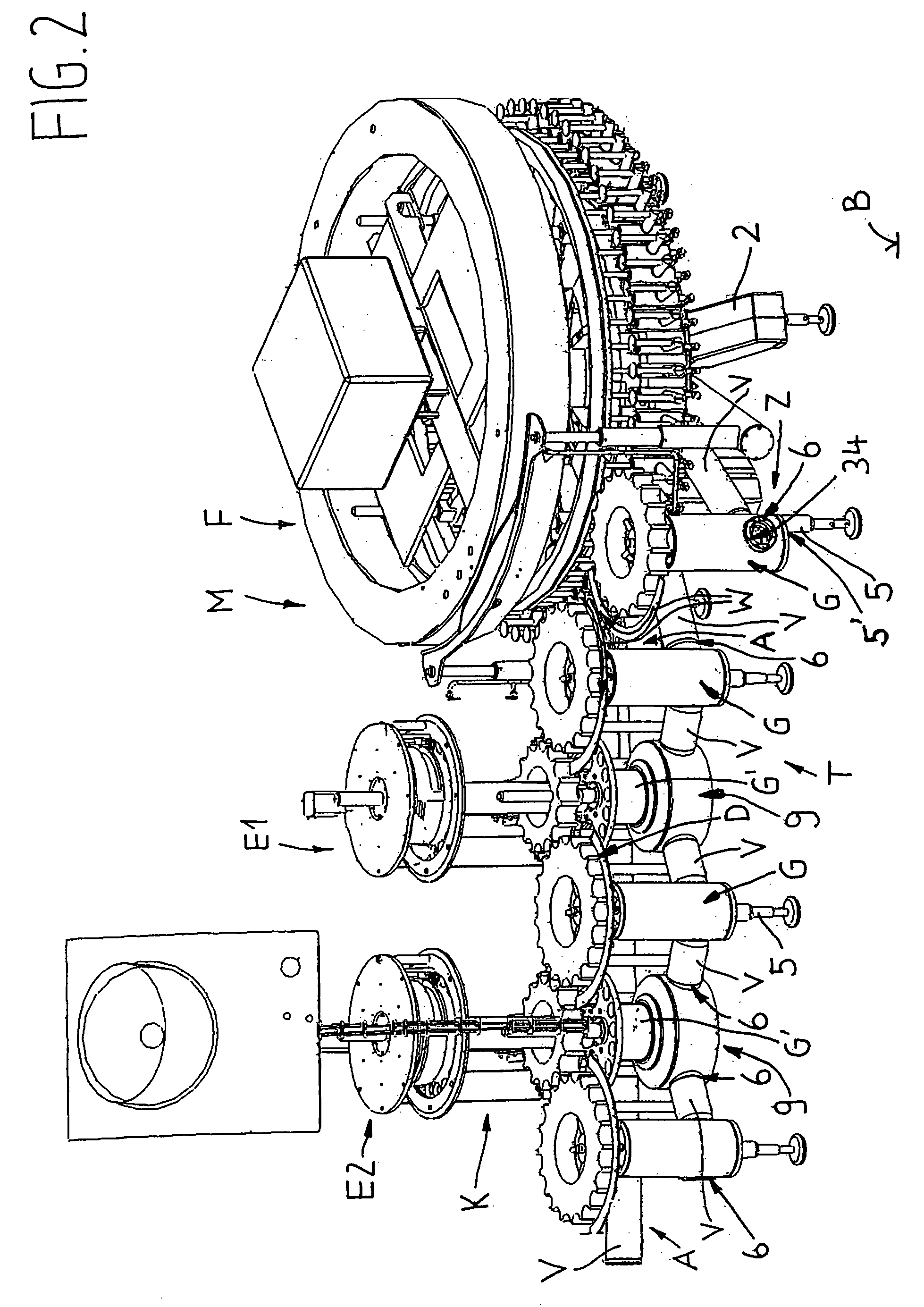Transport system for container processing machines
a technology for processing machines and transportation systems, applied in the field of transportation systems, can solve the problems of unfavorable cleaning of the floor, the shape of the duct carrier in the form of an arc of a circle, and the inability to change the configuration of the star, which is not variable and fixed by the support plate, so as to facilitate the cleaning of the floor
- Summary
- Abstract
- Description
- Claims
- Application Information
AI Technical Summary
Benefits of technology
Problems solved by technology
Method used
Image
Examples
Embodiment Construction
[0039]FIG. 1 shows a container processing machine M using the example of a bottle filler F (shown without top boiler part), with which a transport system T consisting of an inlet star Z and an outlet star A is functionally associated in a star configuration K, in such a manner that the transport paths W of the stars A, Z are linked with the circumferential path of the machine M. In the star configuration, the stars A, Z are at approximately the same distance from the machine on the floor B, in a delimited circumferential area of the machine M. Of the stars A, Z, only the support structure fragments 3 are shown, to simplify, to which the container-transporting elements are attached in the usual manner.
[0040]The machine M presents a substructure 1, which stands with the brackets and support feet 2 on the floor B. Each star A, Z is arranged on the upper part of a support housing G, which carries a drive shaft 4 that can be rotated. Each support housing G is shaped in the shape of a col...
PUM
 Login to View More
Login to View More Abstract
Description
Claims
Application Information
 Login to View More
Login to View More - R&D
- Intellectual Property
- Life Sciences
- Materials
- Tech Scout
- Unparalleled Data Quality
- Higher Quality Content
- 60% Fewer Hallucinations
Browse by: Latest US Patents, China's latest patents, Technical Efficacy Thesaurus, Application Domain, Technology Topic, Popular Technical Reports.
© 2025 PatSnap. All rights reserved.Legal|Privacy policy|Modern Slavery Act Transparency Statement|Sitemap|About US| Contact US: help@patsnap.com



